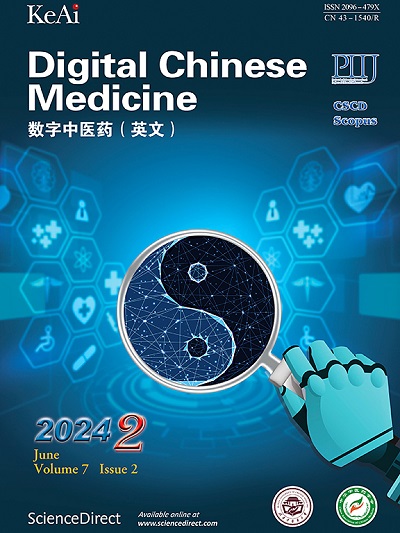Cardioprotective of Saffron (Crocus sativus L.) treatment in patients with type 2 diabetes mellitus: a systematic review and meta-analysis
Q3 Medicine
引用次数: 0
Abstract
Objective
To investigate the cardioprotective effect of Saffron (Crocus sativus L.) treatment as a potential supplement on patients with type 2 diabetes mellitus (T2DM).
Methods
Preferred Reporting Items for Systematic Reviews and Meta-Analyses (PRISMA) guidelines were applied to analyze articles retrieved from PubMed, ScienceDirect, Cochrane Library, Web of Science, China National Knowledge Infrastructure (CNKI), and China Biology Medicine (CBM) with a publication time span from January 15, 2015 to March 20, 2023. The articles were published in English only, including randomized controlled trials (RCTs) on adult patients who were diagnosed with T2DM, and received either Saffron or placebo treatment. Meta-analysis was performed using Review Manager 5.4 software. The present study was registered on the International Prospective Register of Systematic Reviews (PROSPERO) with a registration number as CRD42023443180.
Results
Seven RCTs with 455 patients were included in the study. The data revealed that Saffron treatment significantly reduced tumor necrosis factor (TNF)-α (P = 0.008) and fasting blood glucose (FBG) (P = 0.04) levels compared with what placebo did in T2DM patients. No significant differences were shown in the levels of interleukin (IL)-6, malondialdehyde (MDA), high serum C-reactive protein (hs-CRP), lipid profile, blood pressure, and body mass index (BMI) between Saffron and placebo (P > 0.05).
Conclusion
Saffron treatment has a cardioprotective effect in T2DM patients by reducing TNF-α and FBG levels. However, the potential anti-oxidant, anti-hypertensive, and anti-dyslipidaemia effects of the phytochemical need to be further investigated.
藏红花(Crocus sativus L.)治疗2型糖尿病患者的心脏保护作用:一项系统综述和荟萃分析
目的探讨藏红花对2型糖尿病(T2DM)患者的心脏保护作用。方法采用系统评价与meta分析(PRISMA)指南,对检索自PubMed、ScienceDirect、Cochrane Library、Web of Science、中国知网(CNKI)和中国生物医学(CBM)的文章进行分析,时间跨度为2015年1月15日至2023年3月20日。这些文章仅以英文发表,包括对诊断为T2DM的成年患者进行的随机对照试验(rct),这些患者接受了藏红花或安慰剂治疗。meta分析采用Review Manager 5.4软件。本研究已在国际前瞻性系统评价登记册(PROSPERO)上注册,注册号为CRD42023443180。结果纳入7项随机对照试验,共纳入455例患者。数据显示,与安慰剂相比,藏红花治疗可显著降低T2DM患者的肿瘤坏死因子(TNF)-α (P = 0.008)和空腹血糖(FBG) (P = 0.04)水平。在白细胞介素(IL)-6、丙二醛(MDA)、高血清c反应蛋白(hs-CRP)、血脂、血压和体重指数(BMI)水平上,藏红花和安慰剂没有显著差异(P >;0.05)。结论藏红花治疗可降低T2DM患者TNF-α和FBG水平,具有保护心脏的作用。然而,植物化学物质的潜在抗氧化、抗高血压和抗血脂异常的作用需要进一步研究。
本文章由计算机程序翻译,如有差异,请以英文原文为准。
求助全文
约1分钟内获得全文
求助全文
来源期刊

Digital Chinese Medicine
Medicine-Complementary and Alternative Medicine
CiteScore
1.80
自引率
0.00%
发文量
126
审稿时长
63 days
期刊介绍:
 求助内容:
求助内容: 应助结果提醒方式:
应助结果提醒方式:


